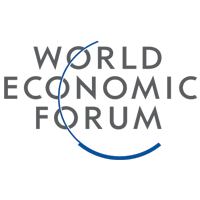
13 NOVEMBER 2018
Cyberattacks Top Risk to Business in North America, EAP, Europe: WEF
Cyberattacks are seen as the top risk to doing business in Europe, North America, and the East Asia and Pacific (EAP) region, according to a report published on Monday by the World Economic Forum (WEF).
The WEF’s Regional Risks for Doing Business report provides insights based on a survey of 12,000 private sector decision-makers from roughly 130 countries.
The study shows that, globally, cyberattacks are the 5th biggest concern, after unemployment/underemployment, failure of national governance, energy price shock, and fiscal crises. Cyberattacks are seen as a bigger risk to doing business compared to the previous year, when they were on the 8th position.
“This is no surprise,” the WEF wrote in its report. “A number of massive cyber-attacks took place in 2017 – notably WannaCry, Petya and NotPetya – causing extensive operational disruption and financial losses for organizations around the world. We will look back at 2017 as the year that the world began to take seriously the potential extent of our vulnerability to cyber-attack disruptions. In our survey, ‘cyber-attacks’ tended to be flagged as a concern in the world’s more advanced economies.”
Cyberattacks were named the top risk in Europe, specifically in 12 European countries. The list includes Germany and the United Kingdom, both of which were badly hit by the WannaCry attack. The WEF also pointed out that the number of cyberattacks in the region has increased significantly in the first quarter of 2018 compared to the same period in 2017.
Cyberattacks are also the top concern in the East Asia and the Pacific region, which includes countries such as Australia, China, North and South Korea, Japan, Singapore and Malaysia.
“The prominence of cyber-attacks as a concern among the region’s businesses reflects the rapid pace of digitization and the increasing sophistication of the region’s economies. South-East Asia in particular is the fastest-growing region in the world in terms of connections to the internet, with a projected 3.8 million new users each month, and estimates that its online economy will reach $200 billion by 2025. These trends make the region a target for criminal and terrorist hackers,” the WEF said.
In North America –- specifically in the United States and Canada, as Mexico has been grouped with Latin America — cyberattacks are the top concern of businesses, followed by data fraud or theft.
“This mirrors the pattern in other economically advanced regions, highlighting the growing reliance of global commerce on digital networks that are the target of increasingly sophisticated and prolific attacks. In this regard, 2017 is likely to mark a watershed, with a series of massive cyber-attacks highlighting the mounting dangers from hackers and the need to bolster public and corporate defences,” the report explains.
In the Middle East and North Africa region, cyberattacks are ranked 6th. However, the United Arab Emirates, which the WEF has described as a “regional outlier,” did rank cyberattacks first. Technology misuse and data fraud are also major concerns in the UAE, on the third and fourth positions, respectively.
In South Asia, cyberattacks ranked 5th, but they represent the main concern in India, the region’s largest country. WEF noted that India is the third in the world — after the U.S. and China — in terms of the volume of detected cyber threats.
It’s worth noting that in Eurasia, sub-Saharan Africa, and Latin America cyberattacks did not make it into the top ten risks.






